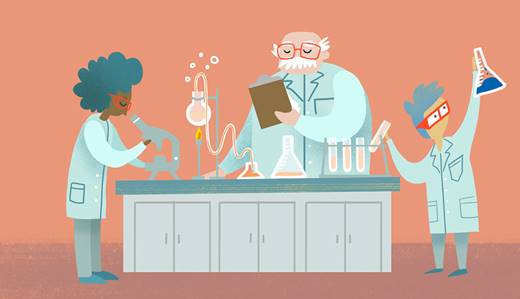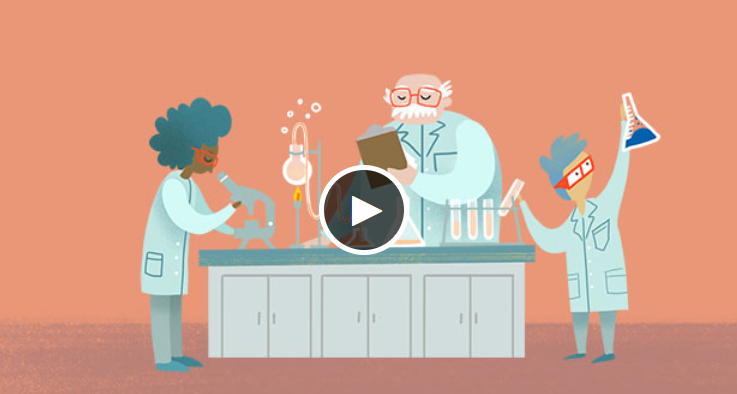Scientific
Inquiry
Click Image to view the video
(username: masloski7511 password: lemon6753)
Introduction
How do scientists study the natural world? In
this lesson, students will learn the characteristics of science, the difference
between science and pseudoscience and examples of scientific laws, theories and
models. They’ll learn how scientific
knowledge develops through a rigorous and iterative process and how that
knowledge is modified as new evidence is uncovered.
Vocabulary
1.
experiment
noun
a test or procedure
done for the purpose of learning or proving something.
Scientists performed
an experiment to study the effects of daily exercise
on dogs.

2.
method
noun
a way of doing
something.
Sally
has his own particular method for studying for an
exam, which includes putting flashcards on his forehead.
Synonyms manner, system, way

3.
model
noun
a usually miniature
representation of something.
The model of
the city fits on my kitchen table but has all of the buildings of the real
city.

4.
modify
verb
to change or amend.
Carla
decided to modify her room by painting it orange.
Synonyms adjust, revise, vary

5.
pseudoscience
noun
a theory or system
that claims to be based on science but has no scientific merit.
Astrology, a belief in a
relationship between constellations of stars and life events, is an example of
a pseudoscience, as it is not based on
science.

6.
theory
noun
an idea that explains
something, but may or may not be right.
A lot of evidence supports
the theory of continental drift, which explains
why the continents look like puzzle pieces that could fit together.

Scientific Inquiry
Scientific inquiry is a learning approach that
combines the scientific process with inquiry learning. It refers to the steps
and strategies used to investigate a science-related topic, question, or
problem.
The scientific method refers
to a process for experimentation. This process includes a series of steps. When
students use the scientific method, they are doing things like observing,
asking questions, and gathering evidence.
Inquiry learning focuses on questions, ideas, and observations, and uses these as an
anchor for learning. It should
be authentic and reflect problems and events that impact our world.
Scientific inquiry is the
combination of the scientific method
and inquiry learning. It is a
great way to help you investigate questions through observations and data so
that you can answer them as thoroughly as possible.
Steps of Scientific Inquiry
1. Ask questions
At the beginning of a scientific inquiry, you make
observations and ask questions.
2. Investigate
Once you have formulated a good question, you can move into
the investigation stage. In this stage, you will make use of previous knowledge
of a subject or concept. Furthermore, you will conduct some background research
on the subject and put together a plan for answering their question.
3. Hypothesize
Next, you need to develop a hypothesis. A hypothesis is an
educated guess about how things work, and it is an attempt to answer a
question. This is a fairly simple part of the scientific inquiry process.
4. Test with experiments
Once you have formulated a hypothesis, you will need to start
testing whether your predictions are accurate, and therefore if your hypothesis
is supported or not. For the experiment to be successful, you will need to
understand the concepts of a “fair test” and “variables”. The experiments
should also be repeated to make sure the final results weren’t simply an
accident. Remember only change one factor at a time and keep the other
conditions the same each time they experiment.
5. Analyze data
When you have completed your experiments, the next step is to
analyze what you observed. Collect observations and measurements and analyze
them for patterns, trends, and whether or not they support the hypothesis.
6. Report conclusions
Finally, report the conclusions. Using the data, you
analyzed, you will need to draw conclusions and make inferences. This is the
stage where statements are made about your specific experiment. Their
conclusions should include both quantitative data (observations
that can easily be measured) and qualitative data (observations
that cannot be easily measured).
